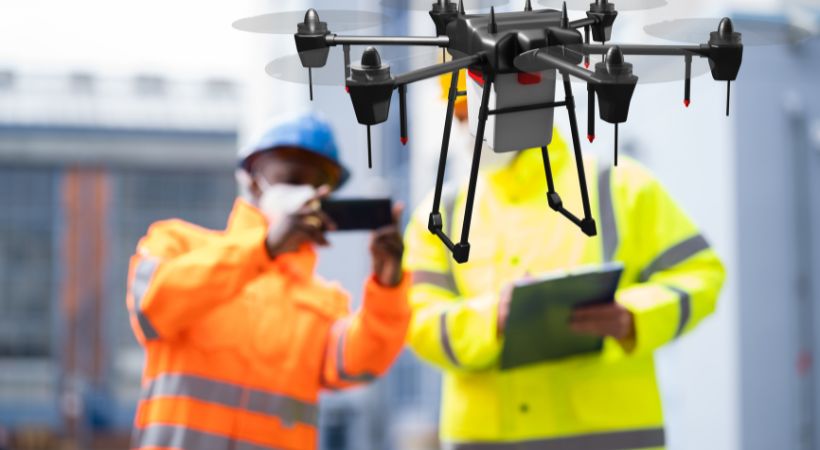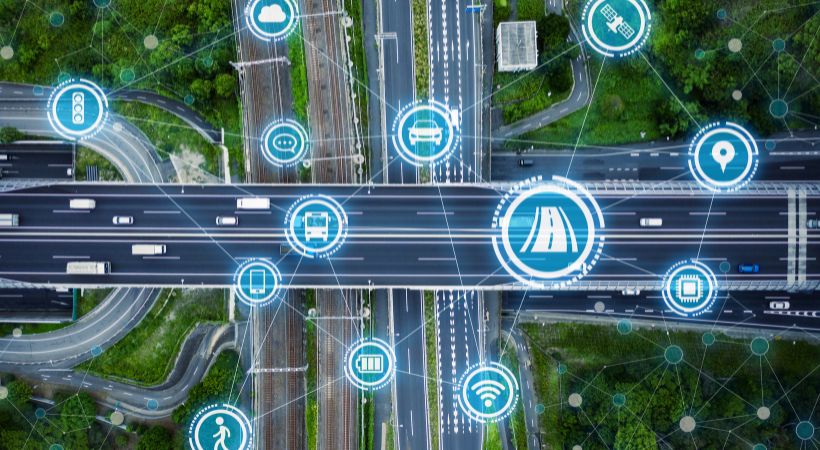Total Autonomous Drone Security Using Artificial Intelligence
Secured's™ Autonomous AI-Powered UAV Solution is an end-to-end product that enables organizations to implement near real-time monitoring and protection.
In today’s world, security threats are constantly evolving and becoming more sophisticated. To counter these threats, security professionals need to be constantly innovating and finding new ways to stay ahead of the curve. One area that is seeing a lot of innovation lately is the use of artificial intelligence and machine learning (AI/ML) in unmanned aerial vehicles (UAVs), commonly known as drones. By harnessing the power of AI/ML, we are able to deploy drones to detect and track potential threats, as well as provide a rapid response to security incidents.
At Secured™, we are at the forefront of this exciting new technology and are proud to offer AI-powered drone surveillance for aerial security that can help keep your premises safe and secure.
Our fully Autonomous Drone Solution provides security officers and emergency responders with a professional tool for collecting near real-time aerial data for security and surveillance. This product automates the logistics involved in drone operations to provide autonomous surveillance and protection, while providing reliable, scheduled and on-demand aerial data collection with extended flight times for larger perimeters. Our platform capabilities span from small, battery-powered drones with infrared and other light-weighted cameras, to large, gas-powered drones capable of five hours of flight time with larger payloads up to 20 pounds. With this solution in place, industrial operations can have the peace of mind knowing that their security risks are being managed effectively.

How Artificial Intelligence improves drone security
The use of artificial intelligence in drones and robots is becoming an increasingly popular addition to many security systems. There are a number of advantages to using AI in drones, including the ability to quickly and accurately identify potential threats, and the ability to respond to them in a timely manner.
One of the most promising applications of AI in security drones is in the area of counter-terrorism. AI-equipped drones can be used to identify, monitor, track, and respond to potential threats without putting personnel at risk. This can help to prevent terrorist attacks before they happen, and to save lives. It can also be used in drones to patrol other security threats, such as drug trafficking, human trafficking, and illegal immigration by monitoring border areas and providing law enforcement officials with near real-time information about potential threats. In addition, it can be used to improve the efficiency of security operations, such as by automating the analysis of video footage and providing decision-makers with instant alerts about potential threats. As technology advances, more efficient and effective AI solutions for defense and security are being developed every day, allowing us to better protect our nation from harm.
In addition to counter-terrorism and security, AI can also be used in drones for a variety of other applications. It can help companies to better protect critical infrastructure, such as by automatically detecting and diagnosing problems with electrical grids or water supplies, and by providing early warnings about potential dangers and risks. AI can also help improve agricultural productivity, assist in search and rescue operations, and provide disaster relief.
The use of AI in drones is an exciting and promising development that can have a significant impact on the security of our world.
AI Object Recognition for aerial imagery via drone technology
AI Object Recognition is a powerful tool for recognizing objects in aerial photographs taken from drones. This technology uses computer vision and deep learning algorithms to identify the various objects within an image, such as buildings, trees, vehicles, and other features. The recognition technology enables autonomous flight of drones to survey areas in order to collect valuable data for analysis. It can also be used to detect changes in land use over time or monitor specific locations.
By leveraging this technology, users are able to quickly and accurately identify objects in aerial imagery. Object Recognition offers a variety of applications ranging from commercial purposes such as inspection and surveying, to emergency response operations and military intelligence gathering. With its ability to accurately detect objects on a large scale, this emerging technology promises great potential for improving safety and efficiency in many industries.


Application of Automatic Change Detection sensors in aerial surveillance
Automatic Change Detection (ACD) technology is a powerful tool for aerial surveillance that can be used, not only for security, but also to detect changes in the environment over time. This technology uses remote sensing techniques such as radar, infrared imagery, and optical imagery to identify changes in land cover and other features of the landscape.
With ACD, it is possible to monitor areas of interest with greater efficiency and accuracy than ever before. The technology can be applied to detect changes in vegetation cover, land development, water sources, roads and more. In addition to its uses in aerial surveillance, ACD technology can also be used to monitor natural disasters or assess environmental health. By being able to quickly detect changes on the ground, professionals can better understand how human activities are impacting the environment and make decisions accordingly. ACD technology has become an invaluable asset for surveillance and security.
Advantages of deploying completely autonomous aerial surveillance
The advantages of a completely autonomous operation are numerous. First, it eliminates the need for manual labor as all tasks can be completed automatically with no human input required. This drastically reduces the costs associated with having to hire and train staff.
Secondly, it increases efficiency and accuracy as processes are completed more quickly and accurately than when done manually.
Third, it reduces the risk of errors and accidents from human error as all operations are monitored by machines that can detect any anomalies or errors quickly and efficiently.
Finally, it allows for scalability, as additional machines can be added to increase capacity without requiring additional personnel or training.
